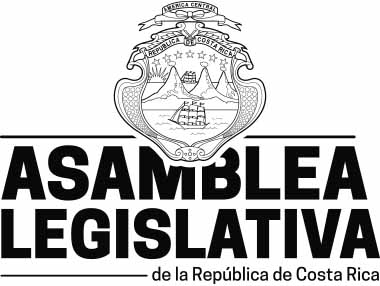LABORATORY REPORT 1 DATE OF EXPERIMENT 862009 2 HYPOTHESIS
BASES LABORATORY ACCREDITATION GUIDELINES RATIONALE AN ACCREDITEDGENERAL RISK FORM ASSESSMENT GUIDANCE – LABORATORY INTRODUCTION
0 HELSINKI UNIVERSITY OF TECHNOLOGY SYSTEMS ANALYSIS LABORATORY RESEARCH
1 BIOLOGY LABORATORY LABORATORY SAFETY OBJECTIVE LEARN SAFETY
1 INTRODUCTION 11 SCOPE OF THE LABORATORY THE DUBLIN
1 SOFTWARE ENGINEERING LABORATORY SIGNUP SHEET CS 2002
Sample
Laboratory Report
Date of experiment: 8/6/2009
Hypothesis / title: Sugar Content of different soft drinks
Objective: To clarify the claims of the soft drinks producers ---“the sugar contents of “Zero” soft drinks are lower than that of “Non- Zero” soft drinks” are correct. To find out which brand of soft drinks has the lowest sugar content.
Introduction:
Carry out the Benedict’s test. The red precipitate formed from the blue solution indicates the presence of reducing sugar in the soft drinks sample. Weigh the precipitate of different samples and compare their amount to determine the sugar content.
Experimental set-up – labeled diagram(s)hand in by hardcopy already
Procedure of the experiment:
a) To remove all carbon dioxide in the soft drinks, put the sample of the soft drinks into a wide-mouthed container (beaker). Set the container in a warm water bath. Stir the drink vigorously for several minutes, and allow it to stand for 15 minutes. Stir vigorously again and cool the drink back to the room temperature.
b) Dilute the sample soft drinks 1/10 times to the original concentration.
For each sample, put 5cm3 of that into a separate test tube. Add 5cm3 of Benedict’s solution into the test tubes and SHAKE THEM WELL.
Boil the test tubes in a water bath for 5 minutes.
Filter the precipitate by filtration.
Dry the filter paper with the precipitates.
Weigh the precipitates and compare the weight of different sample.
Results :
|
Mass of the precipitate (g) |
0.18 |
0.13 |
0.16 |
For Sample B, when Benedict solution is added into it, some red precipitate is formed. The colour of the filtrate is blue. It shows that not all Benedict solution has been reacted. Sample B contains sugar that its amount is less than Sample A.
For Sample C, when Benedict solution is added into it, no red precipitate is formed. The colour of the filtrate is blue. It shows that all Benedict solution is not reacted. Sample C contains no sugar.
Weighting the dehydrated filter paper with red precipitate, mass of the precipitate of Sample A and B is 0.18g and 0.13g respectively. It shows that the sugar content of Sample A is higher than that of Sample B.
|
Sample |
A |
B |
C |
|
Soft drinks |
Coca-Cola |
7-up |
Coca-Cola Zero |
|
Mass of filter paper (g) |
0.8 |
0.8 |
0.8 |
|
Observation |
red precipitate |
red precipitate |
No change |
|
Mass of filter paper after the experiment (g) |
0.98 |
0.93 |
0.96 |
Conclusion:
The claim of the soft drinks producer is correct--- the sugar contents of “Zero” soft drinks are lower than that of “Non- Zero” soft drinks
10122021 26 SEDIMENT LABORATORY PROCEDURES REDWOOD SCIENCES LABORATORY USDA
117 ACCREDITATION NO ISO 15189 TESTING LABORATORYMEDICAL DEPARTMENT 11704
12 ĆWICZENIE LABORATORYJNE NR 4 (W24) 4 022010
Tags: report, experiment, hypothesis, 862009, laboratory
- VIRGINIA DEPARTMENT OF TAXATION LOCALITY EMERGENCY AND AFTER HOURS
- EJEMPLO GUIÓN AMERICANO OPERADOR CORTINA 1 CD TRACK 08
- VICERRECTORADO DE PROFESORADO Y ORDENACIÓN ACADÉMICA PLAN DE DOTACIÓN
- POSTUP 1 ŽADATEL SI VYPLNÍ ŽÁDOST 2 ŽADATEL SI
- STEDH ESTRASBURGO (SECCIÓN 4ª) DE 16 DE NOVIEMBRE DE
- ŠTEV JNMV 09S 2011 LJUBLJANA MAJ 2011 POVABILO
- Notification of Listing (may 1987) Date Name Address City
- UNIVERSIDAD INDUSTRIAL DE SANTANDER ESCUELA DE DISEÑO INDUSTRIAL PROGRAMA
- ICEDRO DETENTION STANDARD PERSONAL HYGIENE IPURPOSE AND SCOPE THIS
- PREMIO INTERNACIONAL DE INVESTIGACIÓN SOBRE COAGULOPATÍAS CONGÉNITAS “DUQUESA DE
- ACUERDO DE INCORPORACIÓN DE VOLUNTARIO LA FUNDACIÓN INSCRITA
- ILUSTRE COLEGIO OFICIAL DE FARMACÉUTICOS C SAN JERÓNIMO 16
- TRPLJENJE JEZUSA KRISTUSA PO JANEZU HVALI GOSPODA JERUZALEM HVALI
- THE SACRED HEART LANGUAGE COLLEGE APPLICATION FOR ADMISSION SEPTEMBER
- MOCIÓ DE CONDEMNA A LA VIOLÈNCIA POLICIAL DE L’ESTAT
- DAUGAVPILS PILSĒTAS PAŠVALDĪBAS IESTĀDE “KOMUNĀLĀS SAIMNIECĪBAS PĀRVALDE” REĢNR 90009547852
- НА ОСНОВУ ЧЛАНА 30 СТАВ 8 СТАТУТА СПОРТСКОГ САВЕЗА
- FLOW CHART PROSES PELAKSANAAN KEGIATAN (PENGELOLAAN BUKU PANDUAN MAHASISWA)
- ORDENANZA Nº 119152014 EXPTENº 53752014HCD VISTO EL EXPEDIENTE Nº
- NYILATKOZAT KOMFORTFOKOZATRÓL LAKÁSFENNTARTÁSI TÁMOGATÁS IGÉNYBEVÉTELÉHEZ ALULÍROTT………………………… ……………(SZÜLETÉS HELYE IDEJE…………………………
- 2 RESOLUCIONES 6 DE AGOSTO DE 2010 D110 RESOLUCION
- ZAŁĄCZNIK NR 3 WNIOSEK OSOBY MAJĄCEJ STAŁY LUB BEZPOŚREDNI
- STIMULATING EDUCATIONAL INNOVATION TODAY TO BETTER PREPARE THE FUTURE
- KRANNERTPURDUE EXTENDED CAMPUS OBHR 59000 (51863) EXPERIENCING LEADERSHIP
- AUTHOR CONCURRENCE FORM CLINICAL NEUROPHYSIOLOGY OFFICIAL ORGAN OF
- P ÁZMÁNY PÉTER KATOLIKUS EGYETEM BÖLCSÉSZET ÉS TÁRSADALOMTUDOMÁNYI KAR
- FOLIO GOBIERNO DEL ESTADO DE MÉXICO SECRETARÍA DE
- CENTRAL AMERICAN CAPITALS MEXICO CITY IS THE
- NA TEMELJU ČL14 ZAKONA O PRORAČUNU («NN» BR 8708
- WHEN YOUR BROKER CALLS TAKE NOTES! (IF YOU DONT
PRESS RELEASE PRESS RELEASE PRESS RELEASE FROM
 R EFERENTIEL D’EVALUATION OPERATEUR AUTONOME QUALITE N° QUESTIONS REPONSES
R EFERENTIEL D’EVALUATION OPERATEUR AUTONOME QUALITE N° QUESTIONS REPONSES PĻAVIŅU NOVADA ĢIMNĀZIJAS DIREKTORAM (VECĀKACITA LIKUMISKĀ PĀRSTĀVJA VĀRDS
PĻAVIŅU NOVADA ĢIMNĀZIJAS DIREKTORAM (VECĀKACITA LIKUMISKĀ PĀRSTĀVJA VĀRDSBOULTIF A AND LOUËR D (1991) “INDEXING OF POWDER
 P EMERINTAH KABUPATEN LAMPUNG BARAT DINAS PEMBERDAYAAN MASYARAKAT DAN
P EMERINTAH KABUPATEN LAMPUNG BARAT DINAS PEMBERDAYAAN MASYARAKAT DAN4 (OBS ESTA ATA AINDA NÃO FOI VOTADA SUJEITA
THE PONTIFICAL COUNCIL FOR LEGISLATIVE TEXTS EXPLANATORY NOTE VIII
PROJEKT UCHWAŁA Z DNIA 2012 R W SPRAWIE
GESTIÓ SANITÀRIA I ASSISTENCIAL DE TORTOSA SAM BASES QUE
1 U OVIM REČENICAMA PODVUCI IMENICE JEDNOM CRTOM A
 INSTRUÇÃO DE TRABALHO – DEPARTAMENTO PESSOAL PROCEDIMENTOS PARA ADMISSÃO
INSTRUÇÃO DE TRABALHO – DEPARTAMENTO PESSOAL PROCEDIMENTOS PARA ADMISSÃOMONTANA WOOD PRODUCTS REVOLVING LOAN FUND (WP RLF) PROGRAM
 EK1 HAZİNEYE AİT TARIM ARAZİLERİ DOĞRUDAN SATIŞ BAŞVURU DİLEKÇESİ
EK1 HAZİNEYE AİT TARIM ARAZİLERİ DOĞRUDAN SATIŞ BAŞVURU DİLEKÇESİACTA DE LA SESSIÓ EXTRAORDINÀRIA CELEBRADA PEL PLE DE
VICERRECTORÍA DE DOCENCIA DEPARTAMENTO DE ADMISIONES Y REGISTRO ACADÉMICO
6 ПРОГРАММА ДИСЦИПЛИНЫ НЕМЕЦКИЙ ЯЗЫК ИНТЕНСИВНЫЙ КУРС
AÑO LECTIVO 2017 CURSO 3º DE ENFERMERÍA (SUBSUELO
 EMOTIONAL INTELLIGENCE LAB DIRECTIONS 1) AFTER READING THE INTRODUCTION
EMOTIONAL INTELLIGENCE LAB DIRECTIONS 1) AFTER READING THE INTRODUCTION INSPECTION OF FURTHER EDUCATION COLLEGES WITH RESIDENTIAL PROVISION FOR
INSPECTION OF FURTHER EDUCATION COLLEGES WITH RESIDENTIAL PROVISION FOR DEPARTAMENTO DE ANÁLISIS PRESUPUESTARIO ALDAPRINF0182019 INFORME TÉCNICO SOBRE EL
DEPARTAMENTO DE ANÁLISIS PRESUPUESTARIO ALDAPRINF0182019 INFORME TÉCNICO SOBRE EL